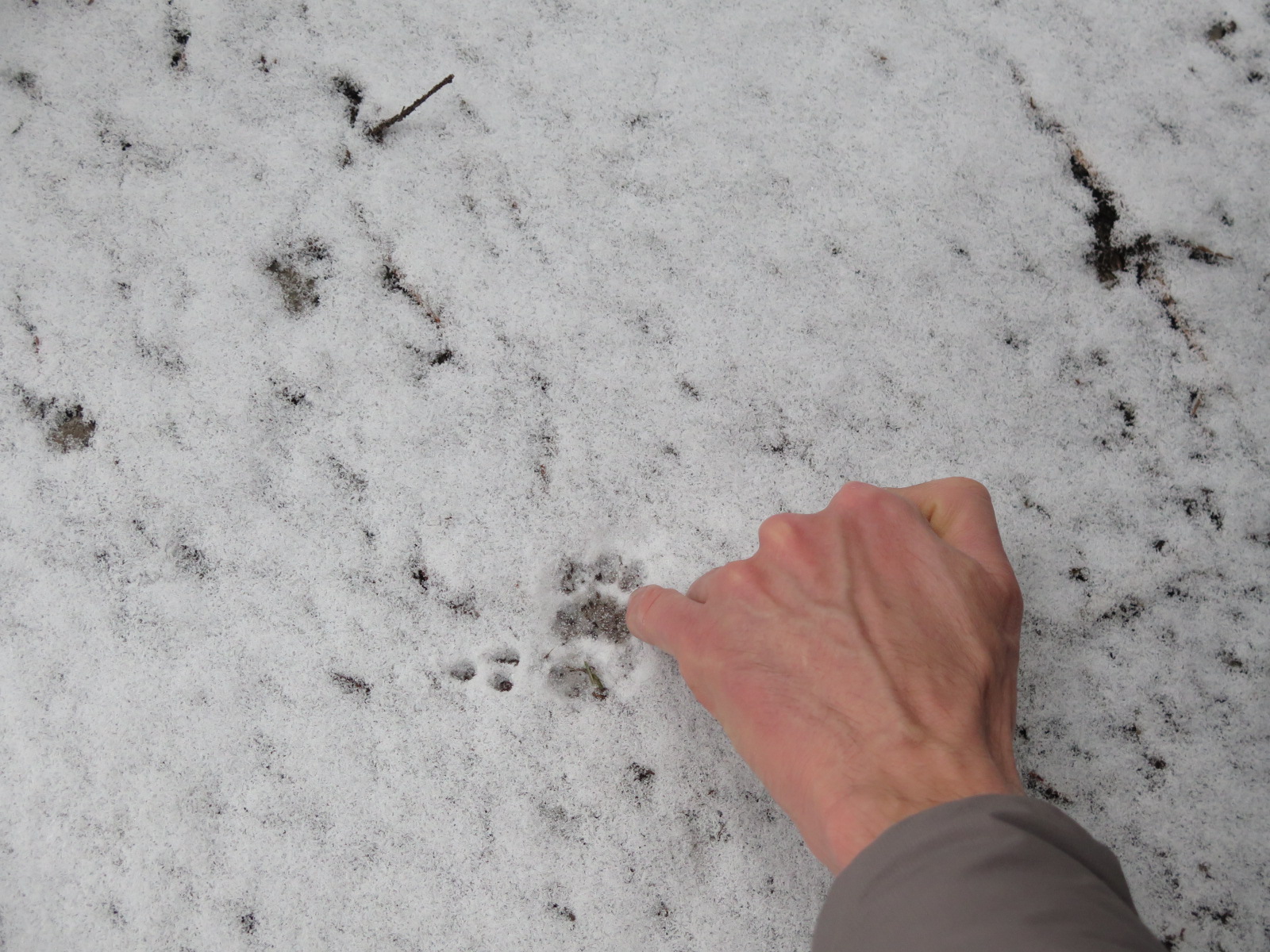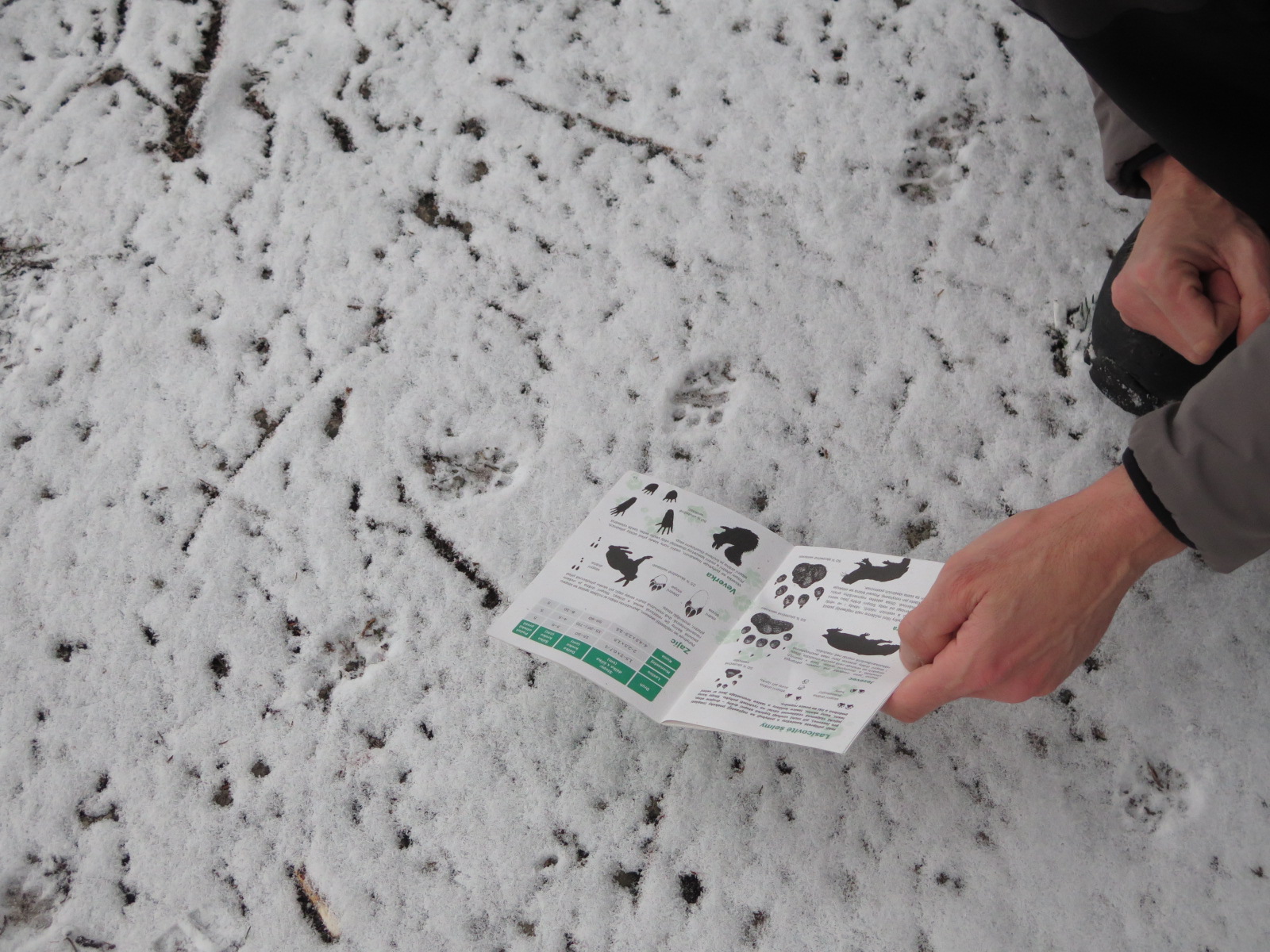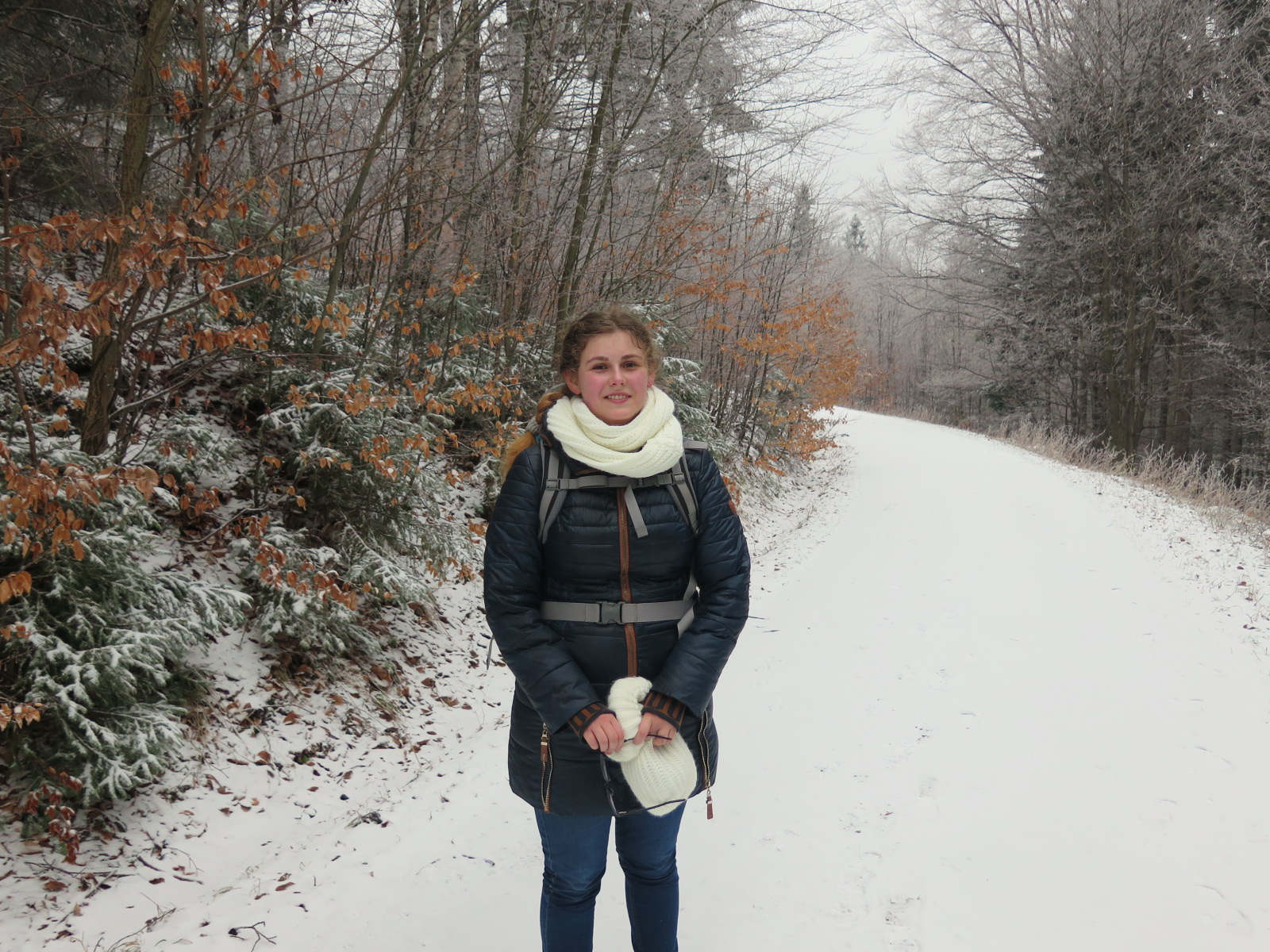TRANSGREEN - A wolf tale in the Carpathians: on volunteering, science and well-documented transport planning
10-04-2018
A story directly from the Carpathian forests told by a volunteer brings a grass-roots perspective on the argumentative roots of the TRANSGREEN project: scientific data. The story is as regional as the project itself: a Ukrainian ecology student, currently based in Vienna, volunteers for a field trip in Czech Republic organized by project partner organization Friends of the Earth, and sends her article for publishing to the Romanian project communicator.
The following story and the photos are copyright of student Valeriia Shcherba, to whom we thank for her openness and can-do attitude, the TRANSGREEN team.
Majestic Beskydy mountains roaming with wildlife! If you feel like adefender of wildlife, if you love mountains and are not afraid of snow, this is where you want to spend your time. Even more so, there is a special way of experiencing these mountains and this is what I want to share with you today, especially if you are a student ecologist, an employee of an environmental protection organization or you just want to help the environment and learn more about wildlife in the Carpathians, you should definitely participate in wolf and lynx patrols. They are organized by one of the largest environmental organizations in the Czech Republic, Friends of the Earth (Hnutí DUHA Oloumuc). More about this organization you can find out by clicking on the link http://www.carnivores.cz.
 How do such volunteer campaigns work? I was there and would be happy to tell you
How do such volunteer campaigns work? I was there and would be happy to tell you
The Beskids or Beskydy Mountains is a traditional name for a series of mountain ranges in the Carpathians, stretching from the Czech Republic in the west along the border of Poland with Slovakia up to Ukraine in the east. My story starts in the Czech part of the Beskydy Mountains, where I came in the small town of Ostravice where I and the other volunteers met and were hosted in a cozy chalet. The first evening was dedicated to getting to know each other over dinner and to organizing ourselves: all volunteers were divided into several small groups and we chose the routes for our patrols. Each group was assigned to an experienced field guide.
The next morning, after dressing warmly and packing all the necessary equipment, we started our trek. When I stepped into this natural Carpathian fir-beech forest, I suddenly felt a fresh smell of spruce. It was so quiet. Time and again I could heard the crackling of the branches and the chirp of birds. As soon as we entered the forest, we noticed a deer. He got scared and ran away quickly but it was the first time in my life that I could see a deer so close, just a couple of meters away.
The Beskids are home to the typical mountain and forest animals such as deer, wild boar, fox, marten and badger, but also to some rare species: wolf, brown bear, lynx, hazel grouse, white-tailed eagle, black stork and others.
 The goal of a wolf and lynx patrol is to find traces of these two species. Once you find them, the next step is to use these tracks as a basis for more information, to estimate the number of animals and to find other signs of their habitat.
The goal of a wolf and lynx patrol is to find traces of these two species. Once you find them, the next step is to use these tracks as a basis for more information, to estimate the number of animals and to find other signs of their habitat.
As a volunteer in a patrol, I had small books with all the necessary information. They described the animals that live in these mountains and details about the traces of every animal. And I also had special ruler: if you know the size of the track, it's easier to determine what kind of animal it is. Our guide had a GPS and we kept all the information there for further processing.

Our guide talked about protected plants and animals in this forest. As once the wolves and lynx were not at all in the Beskydy Mountains and when they began to return an important matter was to protect them from poachers.
It is a difficult but at the same time very interesting and fascinating occupation. You can take beautiful photos, learn more about wild animals, meet interesting people and spend time in the snow-capped mountains.
The length of such a route is on average 20 km and it can last from 6 to 8 hours, depending on the field conditions. Returning to the city you can relax in a cozy cafe, and after returning to the chalet you can take a hot shower and relax, with the satisfaction that you have contributed to the protection and support of the amazing living nature around us.
All the data we collected are very important. The data is processed and subsequently used by various institutions and universities. And of course, all the collected information is primarily used by the project TRANSGREEN since Beskydy is one of the pilot areas of the project.
How and when you can become a volunteer you can find out by clicking on the links www.selmy.cz or www.carnivores.cz.
Account by Valeriia Shcherba.

-----------------
For context:
Integrated transport planning focusing on connectivity for people and nature requires solid scientific background based on updated information collected from the field. TRANSGREEN project proposes umbrella-policy and technical solutions for connectivity in the Carpathians but does so with the support of field-data, which are being collected in the four pilot areas: Beskydy (CZ-SK), Miskolc-Kosice-Uzhgorod (HU-SK-UA), Tirgu Mures-Iasi and Arad(Radna)-Deva (RO).
